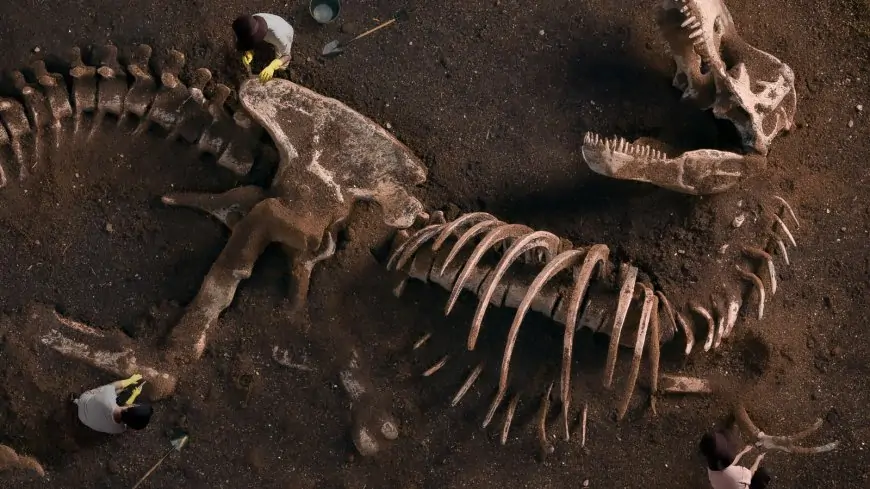Scientists have found the primary proof of a novel respiratory an infection within the fossilized stays of a dinosaur that lived practically 150 million years in the past. The examine was led by Cary Woodruff of the Nice Plains Dinosaur Museum.
Researchers examined the stays of an immature diplodocid — a long-necked herbivorous sauropod dinosaur, like “Brontosaurus" — dating back to the Late Jurassic Period of the Mesozoic Era. The dinosaur nicknamed “Dolly," found in southwest Montana had proof of an an infection within the space of its neck vertebrae.
The examine recognized by no means earlier than seen irregular bony protrusions that had an uncommon {shape} and texture. These protrusions had been positioned in an space of every bone the place they might have been penetrated by air sacs. Air sacs are non-oxygen exchanging elements of the respiratory system in trendy birds which are additionally current in dinosaurs. The air sacs would have in the end linked to “Dolly’s" lungs and formed part of the dinosaur’s complex respiratory system. CT imaging of the irregular protrusions revealed that they were made of abnormal bone that most likely formed in response to an infection.
“We’ve all experienced these same symptoms — coughing, trouble breathing, fever and here’s a 150-million-year-old dinosaur that likely felt as miserable as we all do when we’re sick." Woodruff mentioned.
Researchers mentioned, these findings had been important as a result of Dolly was thought-about a non-avian dinosaur, and sauropods, like Dolly, didn't evolve to turn out to be birds; solely avian theropods advanced into birds. The authors speculated that this respiratory an infection may have been attributable to a fungal an infection just like aspergillosis, a typical respiratory sickness that impacts birds and reptiles right now and might result in bone infections. In addition to documenting the primary incidence of such a respiratory an infection in a dinosaur, this fossilized an infection additionally has vital anatomical implications for the respiratory system of sauropod dinosaurs.
“This fossil an infection in Dolly not solely helps us hint the evolutionary historical past of respiratory-related illnesses again in time, nevertheless it additionally provides us a greater understanding of what sorts of illnesses dinosaurs had been vulnerable to," Woodruff said.
“This would have been a remarkably, visibly sick sauropod," Wolff mentioned. “We all the time consider dinosaurs as massive and difficult, however they received sick. That they had respiratory diseases like birds do right now, actually, perhaps even the identical devastating infections in some circumstances."
The researchers suggested that if Dolly had been infected with an aspergillosis-like respiratory infection, it likely experienced flu or pneumonia-like symptoms such as weight loss, coughing, fever and breathing difficulties. As aspergillosis can be fatal in birds if untreated, a potentially similar infection in Dolly could have ultimately caused the death of the animal.
“We have to continue to expand our knowledge of ancient diseases. If we look hard enough, we may begin to understand more about the evolution of immunity and infectious disease," Wolff mentioned. “After we work collectively between a number of specialities — veterinarians, anatomists, palaeontologists, paleopathologists, and radiologists we are able to come away with a more full image of historic illness."
Learn all of the Newest News, Breaking News and Meeting Elections Reside Updates here.


















